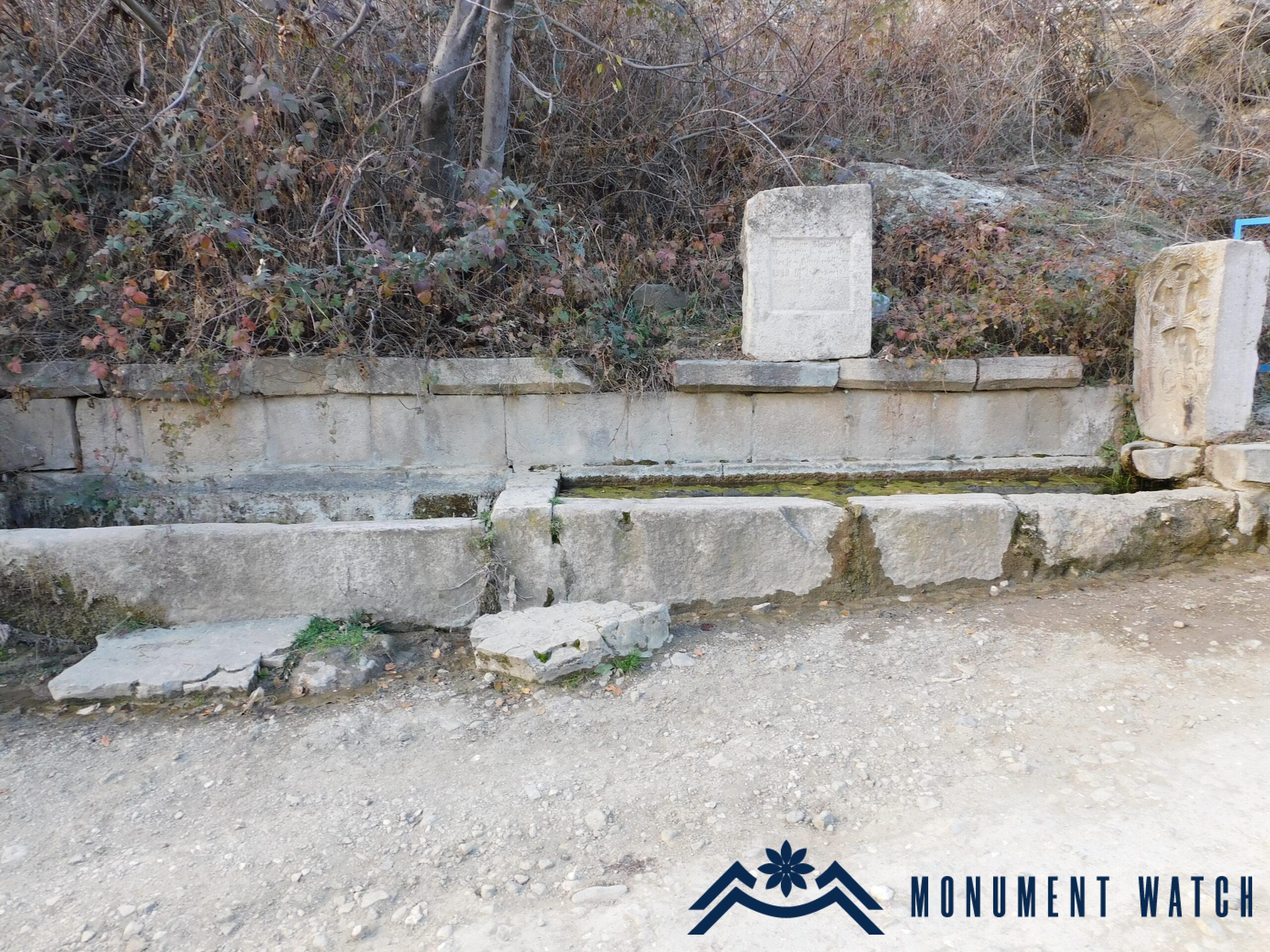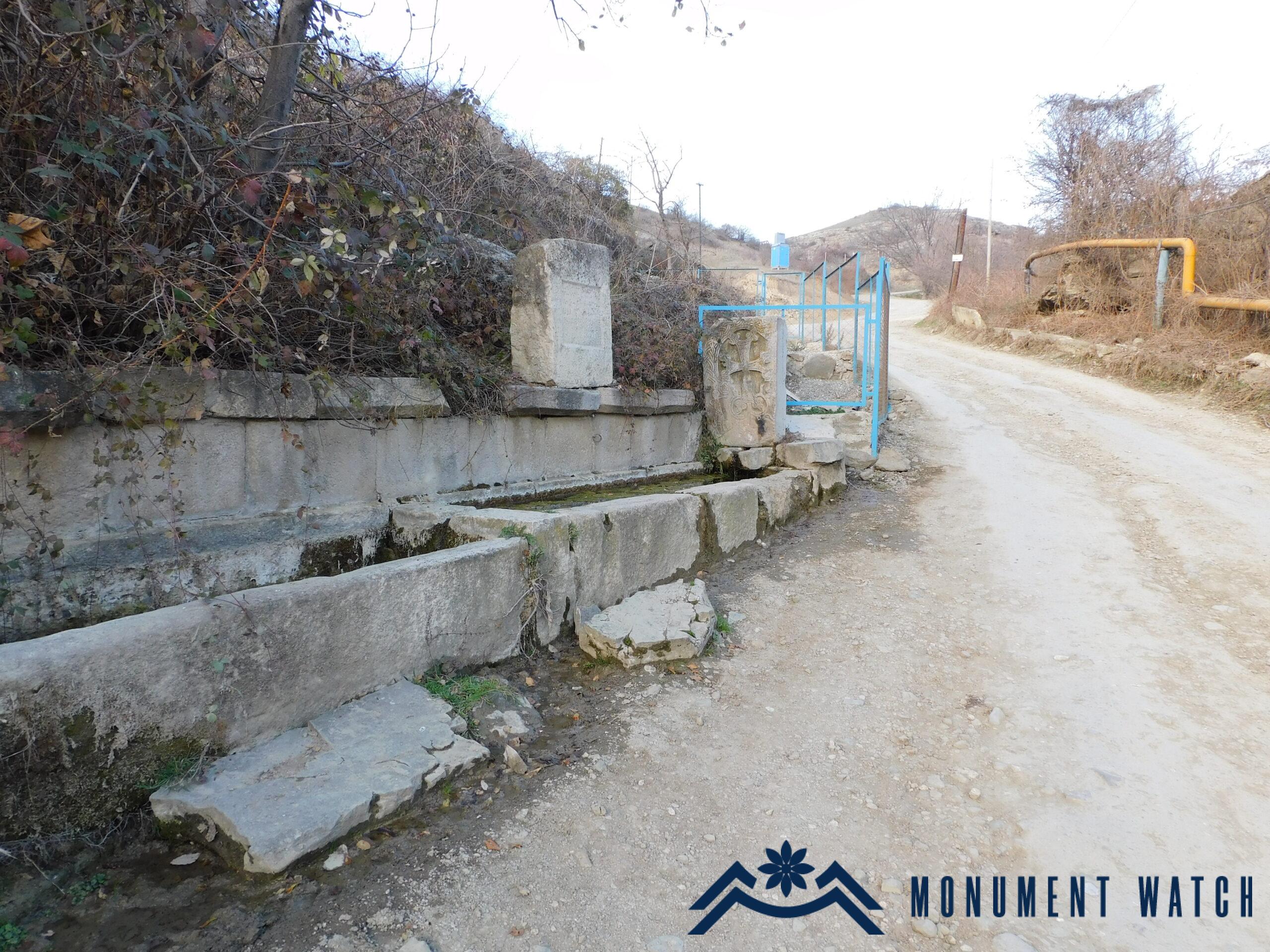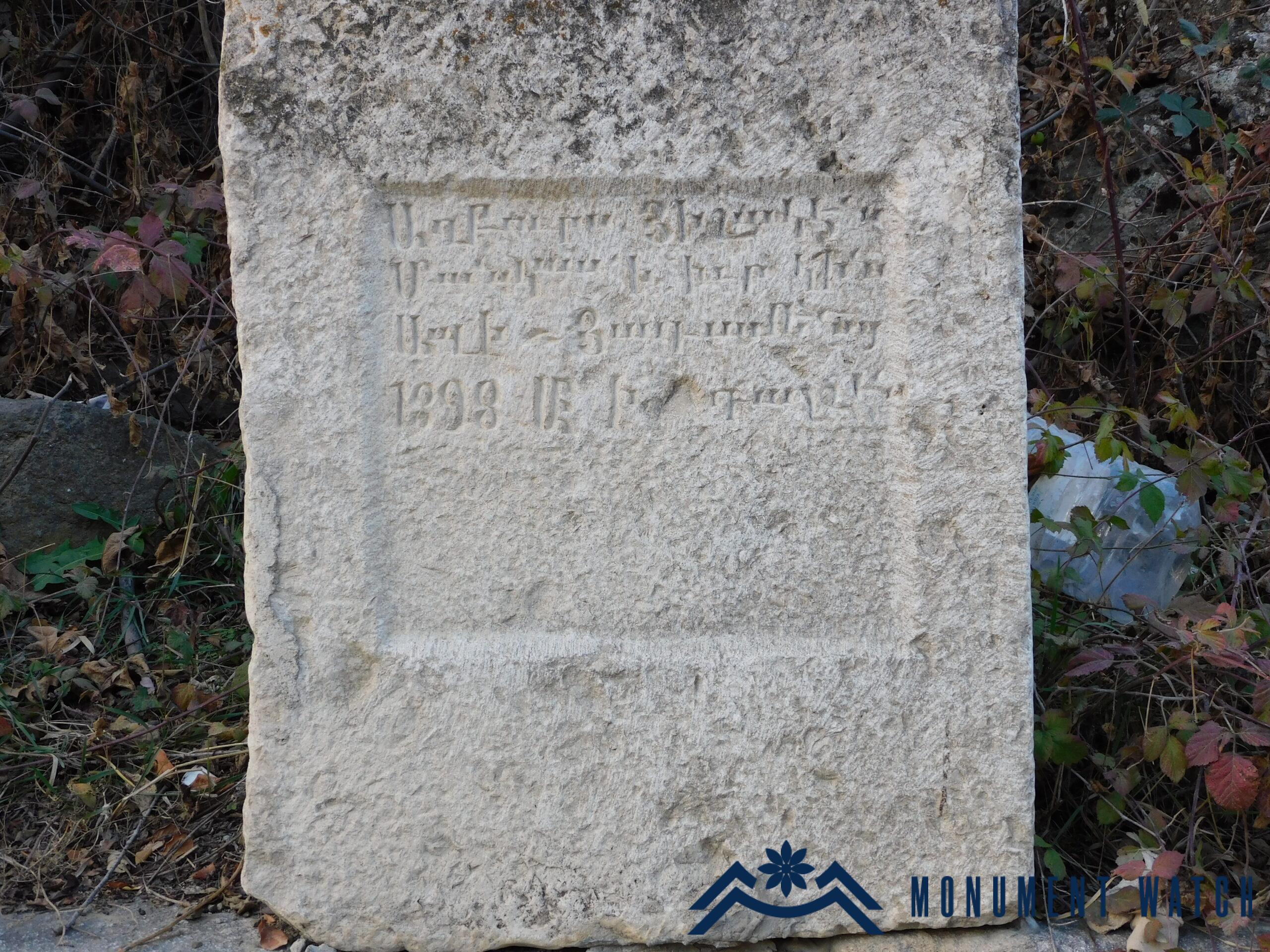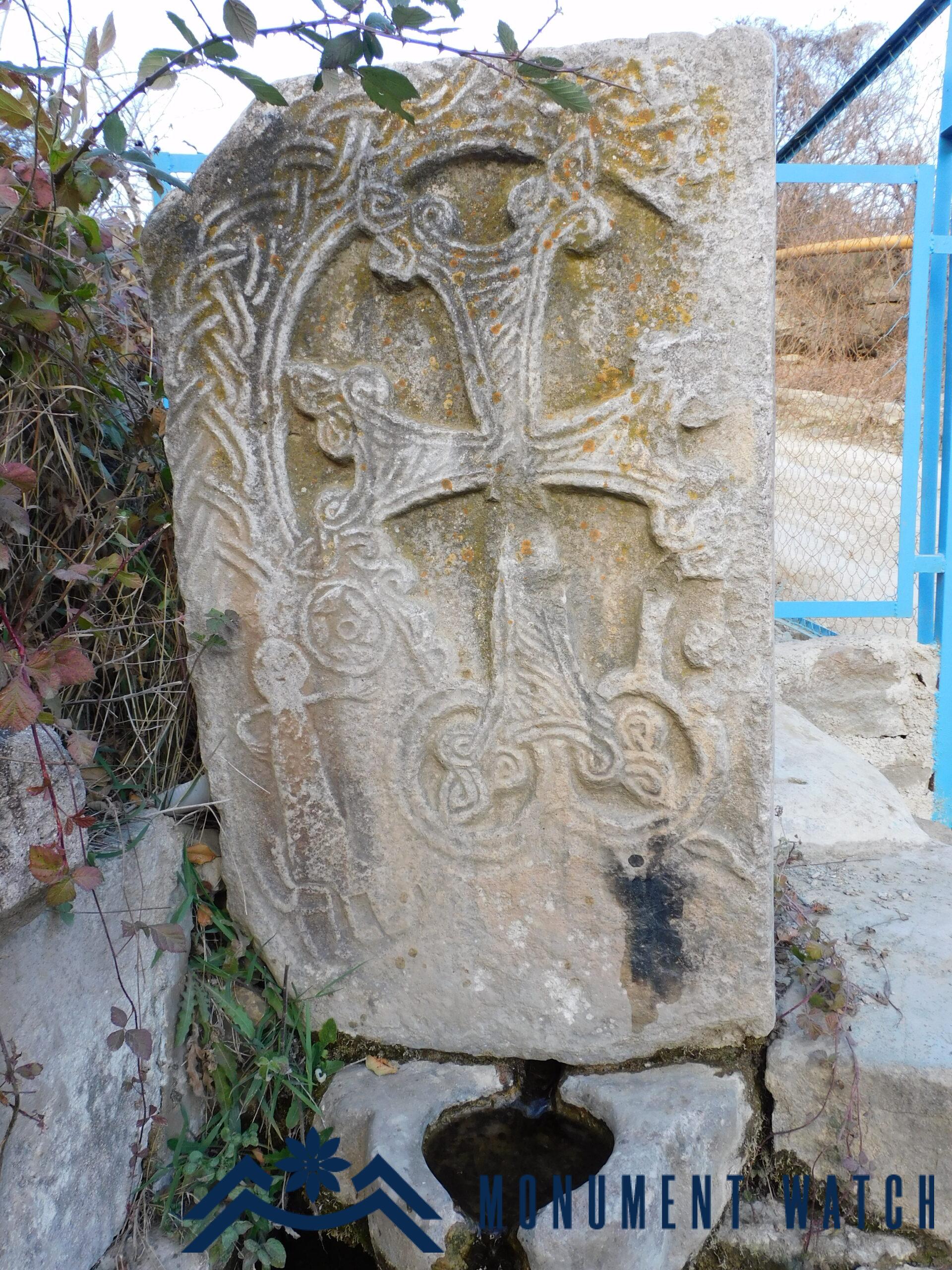The “Karin jur” spring monument of Karashen (Dashushen) village
Location
Dashushen (also known as Karashen) village is situated in the Askeran region of the Republic of Artsakh. It is located 23 km from Askeran and 6 km from Stepanakert. The village area is home to several notable landmarks, including the Surb Astvatsatsin Church, surrounded by tombstones, the Karin Jur spring, and the Tadeos Bridge (see https://monumentwatch.org/en/monument/qarashen-villages-tadeos-bridge/), Surb Saribek sanctuary, etc. Dashushen village is currently under Azerbaijani military occupation.
Historical overview
Makar Barkhudaryants provides information about Dashushen village in his work "Artsakh" (Barkhutareants 1895, 131). The author describes the village's location, amenities, and climate, highlighting that the village’s 40 local households are indigenous. He mentions the Surb Srabek pilgrimage site and observes that it attracts numerous pilgrims, primarily from Shushi. Barkhudaryants also makes note of the ruins of the Nerkin Shen and Soghomon Shen settlements, explaining that their residents relocated to Shushi in 1860 (Barkhudaryants 1895, 131).
Information about Dashushen (Karashen) can also be gleaned from inscriptions that are still preserved on the church, springs, and tombstones in the area.
Architectural-compositional examination
One of the monuments in the village of Karashen (Dashushen) is a spring known as "Karin-jur" (1898, fig. 1). This spring monument was constructed using large blocks of locally polished stone. It features a single water source, and the nave consists of two distinct parts (Fig. 2). The spring has a length of 6 meters and a width of 1 meter. Its facade wall stands at a height of 1.5 meters, and a rectangular slab with a four-line inscription is located on the cornice of this wall. The inscription reveals that the spring was constructed by Mankasi and his wife Asli Yadameants in the year 1898. It reads: "This spring was built in memory of Mankasi and his wife Asli Yadameants in 1898, in Dashushen" (Karapetyan 2023, 68, fig. 3).
On the right side of the Karin-jur spring, in its upper part, stands a khachkar dating back to the 13th century (Fig. 4). The cross on the khachkar is encircled by a woven border, and its wing edges are adorned in the shape of trefoils. The lower part of the cross features sculptures. One of the figures on the left holds a tray of fish, while the other figures have sustained some damage over time.
In addition to the Karin-jur spring, the village is also home to other springs with names like "Sorpen," "Saribeg," "Chinchin," and "Karin Tap" (Kagramanyan 2015, 41).
The condition before, during, and after the war
Karin-jur, one of the five springs in Karashen, has continued to provide water that is used to this day. Both before and after the 44-day war, the spring has remained relatively unchanged.
Bibliographical examination
In his study "Armenian Spring," S. Karapetyan presents the four-part inscription of the Karin Jur spring, but he does not provide additional details or information about the inscription.
Bibliography
- Barkhutareants 1895 - Barkhutareants M., Artsakh, Baku.
- Karapetyan 2023 - Karapetyan St., Armenian Springs, Yerevan.
- Ghahramanyan 2015 - Ghahramanyan H., Directory of socio-economic units of the administrative-territorial units of the Nagorno Karabakh Republic, Yerevan.
- Artsakh cultural heritage monitoring, Tadeos bridge of Karashen village, 25.09.2023.
The "Karin jur" spring monument of Karashen (Dashushen) village
Artsakh




